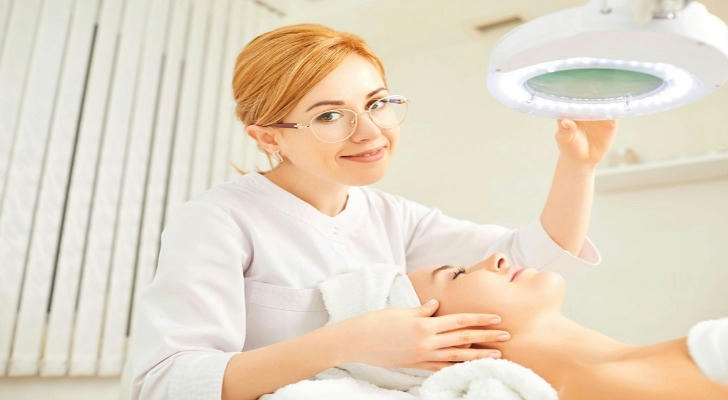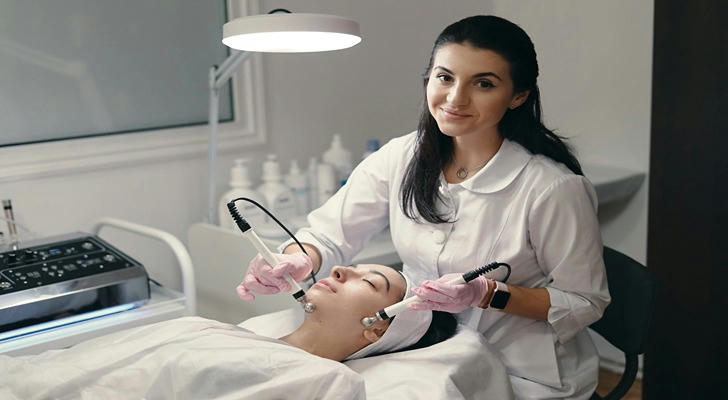Want to enter the medical beauty industry? Detailed explanation of common medical beauty career paths in the United States
Medical beauty, once an industry exclusively for stars and celebrities, is now rapidly entering the public eye. Whether it is micro-plastic surgery, skin management, or optoelectronic projects, there is a group of professional medical beauty practitioners behind them. As people's attention to appearance management continues to increase, the medical beauty industry in the United States continues to expand, providing a variety of career paths for those who are interested.
So, what qualifications do you need to work in the medical beauty industry in the United States? What career roles can you choose? How should you plan your own growth path? This article will give you a comprehensive analysis 📝

1. The American medical beauty industry: not just "injections" ✨
When it comes to medical beauty, many people's first reaction is Botox, hyaluronic acid, facelift surgery and other projects, but in fact this industry covers a wider range, including:
Non-surgical beauty (injection filling, laser hair removal, radio frequency skin tightening, etc.)
Clinical skin care (fruit acid peel, medical skin care)
Surgical plastic surgery assistance
Beauty technology equipment operation
Medical beauty consulting and sales
This industry spans multiple fields such as medicine, nursing, dermatology, and aesthetics. There are both clinical practitioners and technical operators and consultant service talents, which are suitable for practitioners from various backgrounds to join.
2. Analysis of the core career paths in the medical beauty industry 🧭
The following are several major career paths in the medical beauty industry in the United States, each with different entry barriers and development space.
1. Registered Nurse (RN)/Nurse Practitioner (NP)
👩⚕️ This is one of the core forces in the field of medical aesthetic injections, especially in injection projects (such as Botox, hyaluronic acid, lipolysis injections, etc.), RNs and NPs are usually the first-line operators.
- Responsibilities: Assess customer needs, perform injections, and deal with postoperative reactions.
- Development direction: Can work in a medical aesthetic clinic or become an independent injection nurse.
- Case: Samantha, a former critical care nurse, specialized in micro-plastic surgery after switching careers, and later opened a personal medical aesthetic studio in Los Angeles, with a steady growth in customer base📈.
2. Physician Assistant (PA)
⚕️ PAs usually work with doctors to conduct face-to-face consultations, prescribe prescriptions, and evaluate efficacy. They can also perform medical aesthetic injections in many states.
- Responsibilities: Work with physicians to develop beauty treatment plans, and perform laser operations and injections.
- Advantages: Enjoy independent treatment rights in some states, and have more opportunities for promotion to management positions.
3. Medical Aesthetician
💆♀️ Unlike ordinary beauticians, medical beauticians provide technical skin treatments such as microneedles, water light needles, and acid peels under the supervision of doctors or nurses.
- Responsibilities: Assess skin conditions, operate medical beauty equipment, and perform postoperative care.
- Skill requirements: Familiar with dermatology, equipment operation and disinfection procedures.
- Case: Jessica, who switched from a traditional beauty salon to a dermatology clinic, focused on LED light therapy and vacuum radio frequency projects, and has now become a main technician.
4. Aesthetic Consultant / Coordinator
📊 This type of position is suitable for practitioners who are good at communication and marketing, focusing on customer service and project introduction.
- Responsibilities: Help customers understand the course of treatment, arrange appointments, follow up on postoperative effects, and recommend products.
- Advantages: Medical background is not necessarily required, but a deep understanding of medical beauty projects is required.
3. How to choose a path that suits you? 🔍

The key to entering the medical beauty industry is not to blindly follow the trend, but to understand your own strengths and interests. You can think from the following dimensions:
| Dimension | Preferred career type |
|---|---|
| Like to do hands-on | Injection nurse, medical aesthetician |
| Like to communicate with people | Medical beauty consultant, preoperative consultant |
| Preferred medical system | PA, NP, RN |
| Interested in skin care science | Medical aesthetician, skin therapist |
In addition, the entry requirements, practice licenses, and continuous training of different career paths will also be different. Before planning, it is recommended to refer to the specific requirements of each state for relevant professional qualifications and conduct professional course training.
4. Real case sharing: transformation stories of three practitioners 🗣️
🧴 Amanda, former beauty saleswoman → medical beautician
At first, she just wanted to improve her professional understanding of skin care products, but after in-depth study, she obtained a medical beauty qualification certificate and entered a dermatology center. She is now proficient in photorejuvenation and microneedle projects. She said: "I have changed from selling beauty to creating beauty, and the sense of achievement is completely different!"
🩺 David, former surgical nurse → injector
After getting tired of the high-pressure environment of the hospital, David chose to switch to the medical beauty industry. After training and internship, he joined a chain clinic and is now the chief injector of high-end projects. "This job pays more attention to communication and details, and I enjoy it."💉
💬 Karen, marketing specialist → medical beauty consultant
Karen, who has no medical background, was originally responsible for promoting medical beauty brands. Later, by accumulating product knowledge, she became an internal consultant of the clinic and was good at customizing treatment plans for customers. "Understanding customers and designing solutions are what I am best at."
5. Future trends: Professionalization and personalization in parallel 🌟
The future development of the medical beauty industry in the United States will pay more attention to professional and personalized services. For example:
- Multi-skill integration: Injectionists master skin management technology at the same time to improve comprehensive competitiveness.
- Aesthetic leadership improvement: From single technical operation to aesthetic evaluation + psychological communication evolution.
- Data analysis: Use skin detection system and AI imaging analysis to improve the accuracy of the solution.
6. Turn passion into a career, starting with planning
To enter the medical beauty industry, you don't need the courage to become famous overnight, but the passion and professionalism of steady progress. Whether you want to change careers, further study, or start from scratch, you can find a path that suits you. After all, the most moving part of the medical beauty industry is not only "becoming beautiful", but also "making beauty a profession that is understood and supported" 💖
